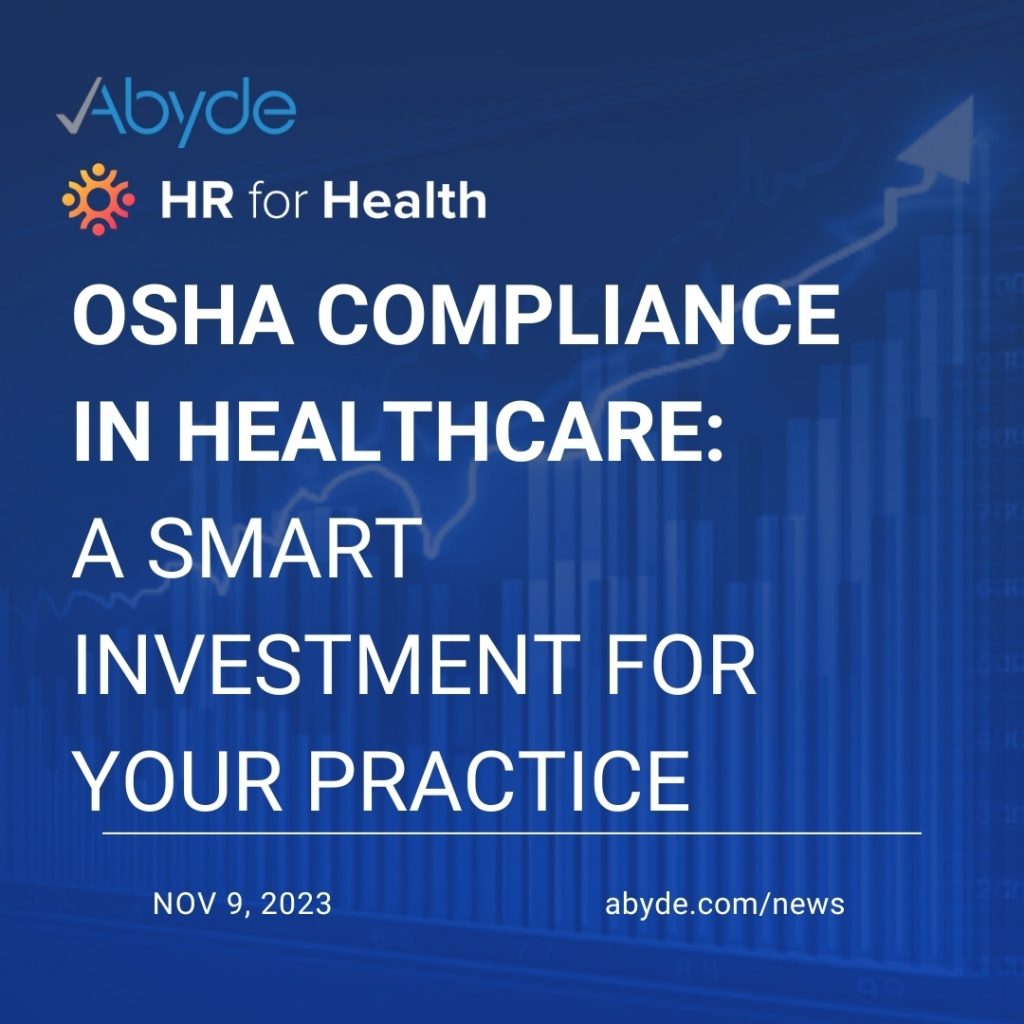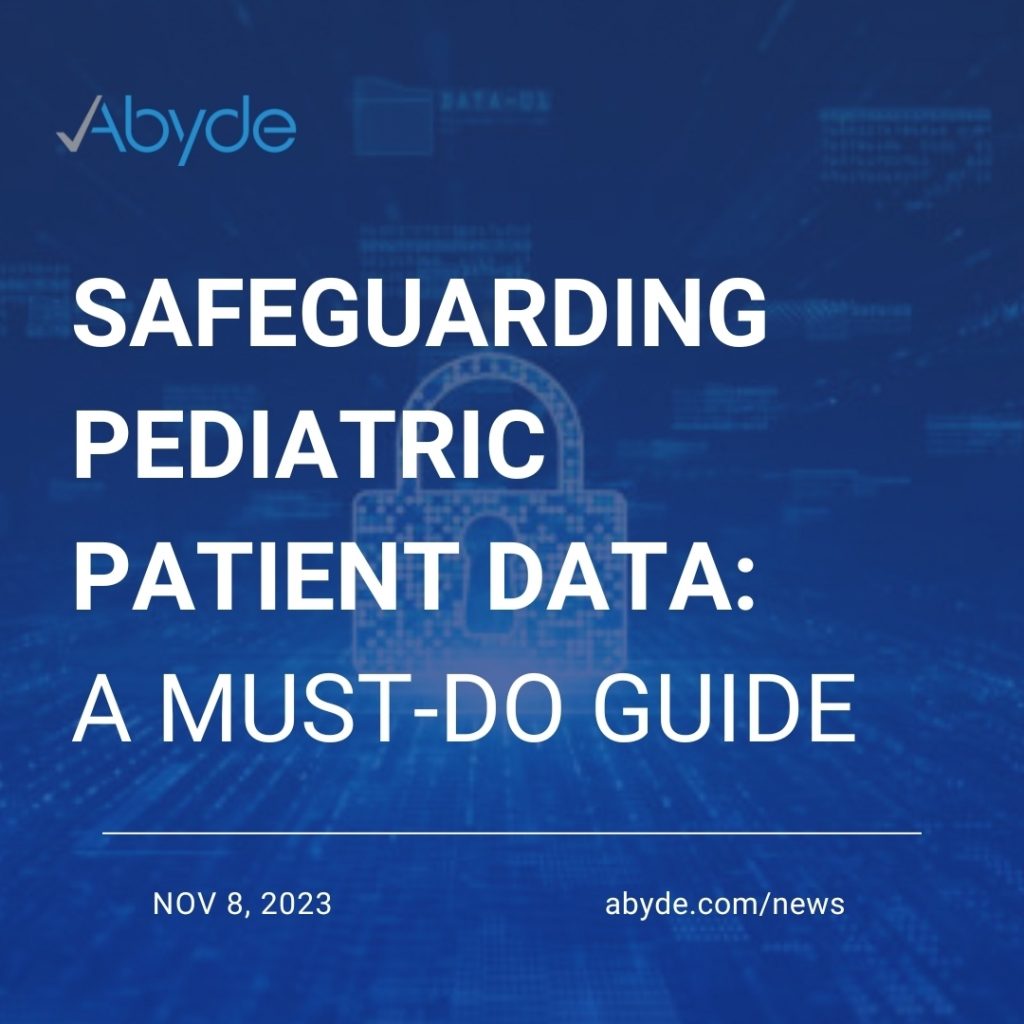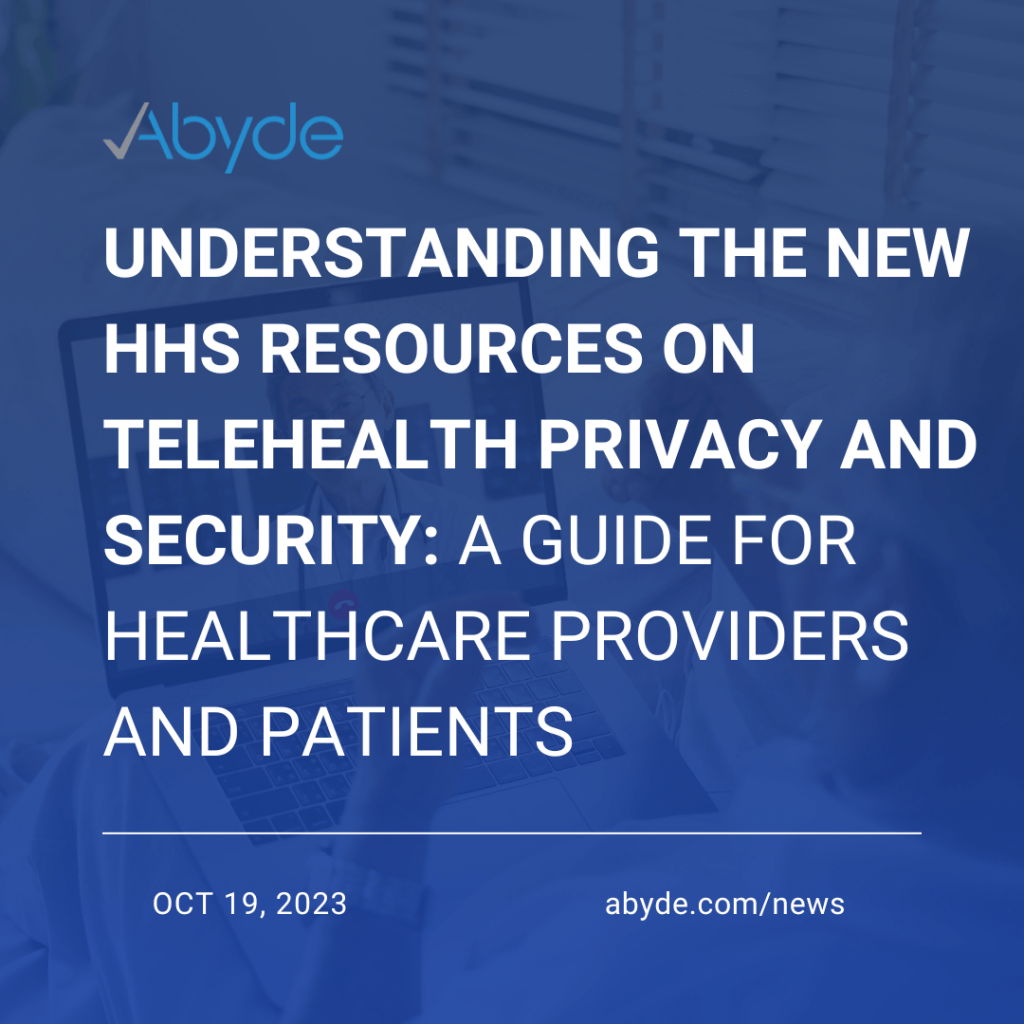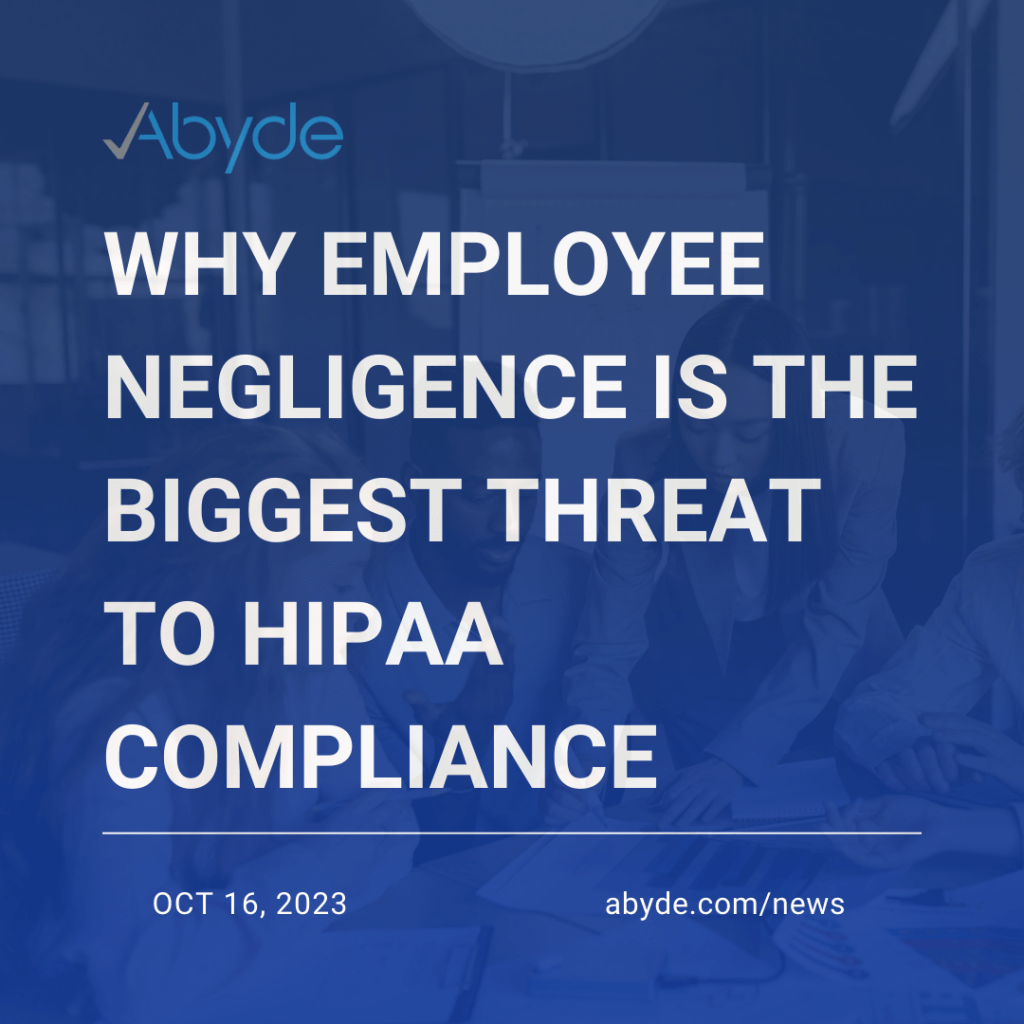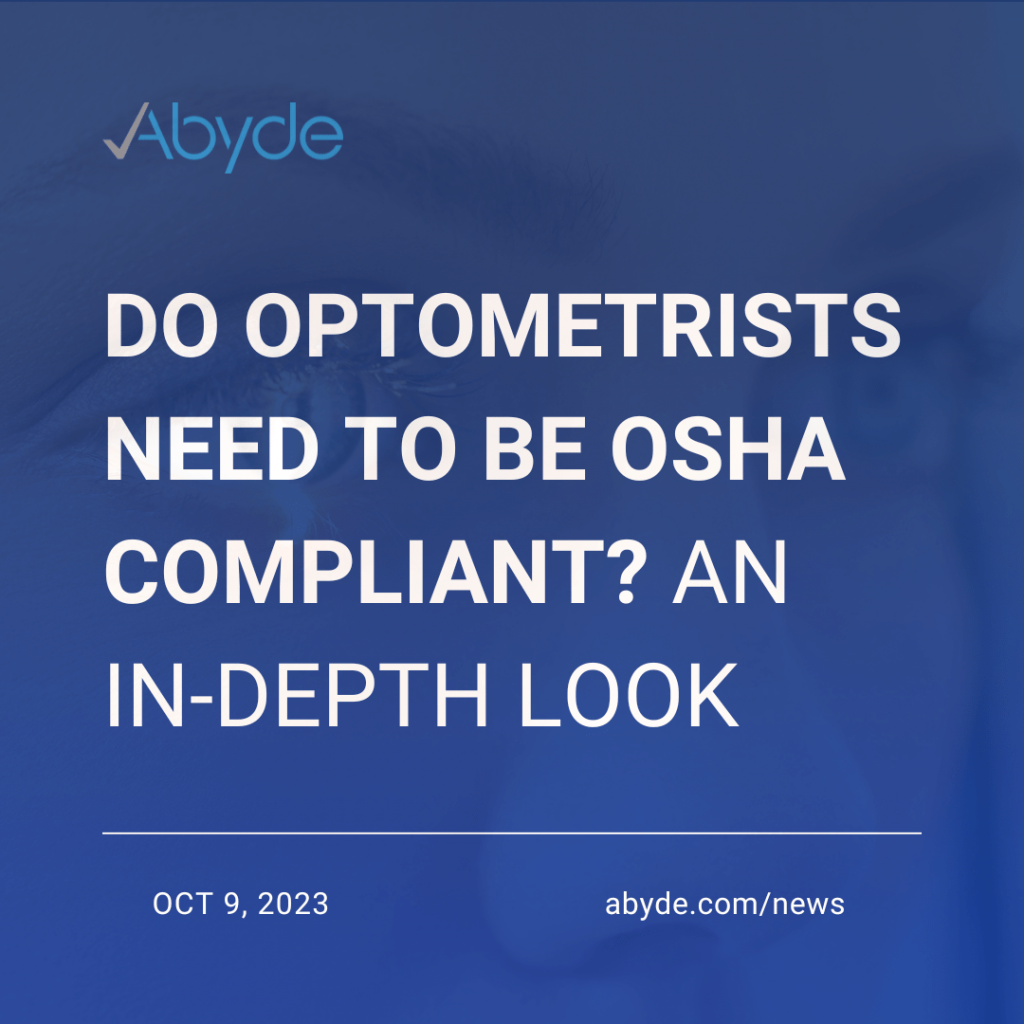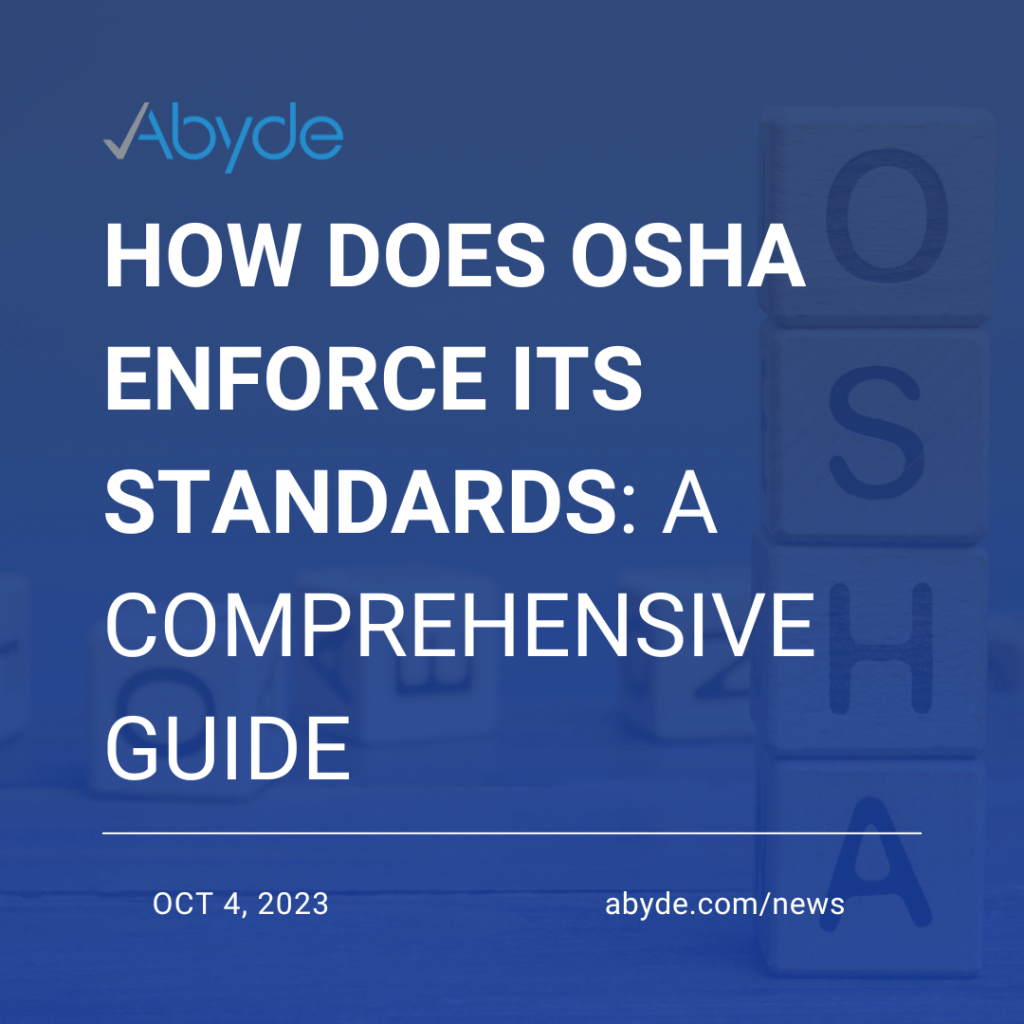November 9, 2023 The following blog was co-written with Abyde’s HR partner, HR for Health. If you would like more information on HR for Health, please click here to visit their website. As a practice owner or healthcare employer, it is essential to prioritize the safety and well-being of your employees. One effective way to achieve this is by providing your team with proper Occupational Safety and Health Administration (OSHA) training. However, the cost of such training may deter some employers from investing in it. HR for Health team’s up with compliance partner Abyde to explore the nuances of OSHA training and the benefits of compensating your employees for their time spent training. OSHA in Healthcare: Navigating the Compliance Maze OSHA is a federal agency that’s all about keeping workplaces safe and healthy. In the healthcare world, this translates to ensuring the safety of both employees and patients. OSHA sets the rules, regulations, and guidelines that healthcare providers must follow to maintain a safe working environment. Requirements for Healthcare Providers Healthcare providers must adhere to OSHA regulations to ensure the well-being of everyone in the facility. This involves a multitude of requirements, from infection control to safe handling of hazardous materials, to reducing workplace violence. Compliance with OSHA standards is not just a box to tick; it’s about safeguarding the lives and health of patients and employees. The Crucial Connection to Employee Training and Retention Now, here’s where it gets interesting. Effective training and compliance with OSHA regulations play a pivotal role in employee training and retention. When healthcare providers prioritize OSHA training, they signal a commitment to employee well-being. This commitment, in turn, results in a happier, healthier, and more loyal workforce. Investing in comprehensive OSHA training demonstrates that you value your employees’ safety. This not only creates a positive work culture but also significantly impacts employee retention. Employees who feel secure and well-cared for are more likely to stay with your healthcare practice, reducing turnover rates and the costly process of recruiting and training new staff. Additionally, by equipping your employees with the necessary knowledge and skills to work safely, you can significantly reduce the risk of incidents occurring on the job. Consequently, this can save your company money in the long run, as workplace accidents lead to expensive workers’ compensation claims and lost productivity. The Legal Perspective According to HR for Health, compensating employees for OSHA training is not only a wise business decision but may also be required by law. Under the Fair Labor Standards Act (FLSA), employers must pay employees for their time spent in training directly related to their job duties. Therefore, if you require employees to complete OSHA training as part of their responsibilities, you must compensate them for the time spent in training. On the flip side… Employers may choose to provide a different rate of pay for training, but it’s left up to employers to decide if their training falls under certain criteria to provide a different rate of pay versus their regular rate of pay. These are the criteria points that must be met: It is imperative that you clearly outline the alternate rate of pay in your employee handbook, which cannot be less than minimum wage. How Abyde Keeps You Compliant Abyde, a provider of HIPAA compliance solutions, emphasizes the importance of OSHA training for healthcare organizations. In addition to reducing the risk of workplace accidents, OSHA training helps healthcare providers comply with HIPAA regulations. By ensuring that employees are trained on proper handling and disposal of hazardous materials, healthcare organizations can avoid costly fines and penalties for non-compliance. Abyde’s key features include: For more information on Abyde and how they work with your healthcare practice, please visit https://abyde.com/. Track Employee Training with HR for Health HR for Health is a comprehensive human resources platform designed specifically for healthcare professionals. Key training tracking features include: In conclusion, compensating employees for OSHA training is a wise investment for employers who prioritize the safety and well-being of their team members. Not only does it help prevent workplace accidents and injuries, but it also boosts employee morale and job satisfaction. As HR for Health and Abyde suggest, employers should be aware of their legal obligations and take steps to ensure that employees are properly compensated for their time spent in training.
Safeguarding Pediatric Patient Data: A Must-Do Guide
November 8, 2023 Imagine a bustling pediatric practice, filled with the laughter of kids. In this lively setting, protecting patient data may not be the first thing on your mind, but it’s as important as ensuring those precious smiles! At Abyde, we’re all about ensuring the well-being of your little patients, and that begins with safeguarding their data. Let’s explore why this is crucial and how compliance and security play a vital role in keeping patient information safe. Why is Pediatric Patient Data So Important? The health records of children are a treasure trove of essential information, from vaccination records to allergies and growth charts. But medical data isn’t the only data that’s valuable – you’re also talking names, dates of birth, addresses and potentially social security numbers. Securing this data is vital to guarantee a healthy future for your young patients. The Compliance Connection So, what’s compliance? Think of it as your guide to data security. Compliance means adhering to rules and regulations, ensuring patient data remains secure. HIPAA (Health Insurance Portability and Accountability Act) is one of these essential rules, setting the standards for protecting sensitive health information. The Role of Security Security acts as the guardian of patient data. It encompasses measures like secure passwords, firewalls, and encryption, shielding data against breaches and unauthorized access. However, there’s a crucial component: proper documentation. Without it, your security measures are like having a shield but no strategy. Documented policies and procedures are your roadmap for keeping data safe, outlining how data is accessed, stored, and shared. It’s More Than Just Locks and Keys Data security isn’t just about digital locks; it’s also about your staff’s training to protect this treasure. Training ensures that they handle patient data responsibly, whether it’s on paper or in a computer. Equally important is your ability to prove that you’re doing everything right. Regular audits and monitoring help you ensure that your data is well-protected. In Conclusion The secret to protecting pediatric patient data involves a blend of compliance, security, documented policies, and well-trained staff. When you get this recipe right, you become a healthcare hero in the pediatric world. Remember, every effort you invest in safeguarding patient data ensures more smiles on those adorable faces. And there’s no better way to implement and sustain mandatory compliance programs than with Abyde—the industry’s easiest and most comprehensive software. With Abyde, you’ll effortlessly manage your compliance needs and keep those little smiles sparkling and secure!
Prioritizing Mental Health in the Workplace: A Guide to OSHA Resources and Best Practices
October 23, 2023 The modern workplace can often be a breeding ground for stress, anxiety, and other mental health concerns. In fact, 80% of employees experience some form of stress at work. Mental well-being can take a backseat as employers and workers grapple with deadlines, interpersonal conflicts, and work-life balance. However, it’s essential to prioritize mental health for overall productivity and harmony within an organization. Abyde, a leader in HIPAA and OSHA compliance solutions, aims to shed light on the importance of this topic and the valuable resources provided by the Occupational Safety and Health Administration (OSHA) to help organizations build a healthier work environment. The Importance of Mental Health Awareness Talking openly about mental health is the first step toward reducing the stigma surrounding it. Employers, unions, and worker organizations have a vital role to play in this discourse. From educational initiatives to supportive policies, these bodies should invest in strategies that focus on: OSHA Resources to Support Workplace Mental Health Support One Another Toolkit This toolkit provides comprehensive guidelines for creating a workplace culture encourages mental health discussions. Available in both English and Spanish, it is an excellent resource for initiating dialogues around mental well-being. Working Together Poster A handy resource for employers and workers alike, this poster outlines the essential steps to address workplace stress and mental health issues effectively. Supporting Your Co-Workers Poster Compassion and understanding are essential when talking about mental health. This poster offers concrete tips on approaching such sensitive topics respectfully, listening empathetically, and providing meaningful support to co-workers. Worker-Fatigue Webpage Worker fatigue is often a precursor to more serious mental health concerns. OSHA’s dedicated webpage on this issue includes information on the impact of demanding work schedules and offers recommendations for preventing fatigue-related injuries and illnesses. Helping Your Co-Workers and Yourself Poster Focusing on mutual support, this poster provides general tips and advice for employers and employees to help each other cope with stress and mental health challenges. Building an Awareness Campaign The resources mentioned above can serve as building blocks for an effective mental health awareness campaign within your organization. OSHA also has written a guide for managers discussing mental health challenges with their employees. Employers can customize these resources to suit their specific workplace environment and challenges. Final Thought Promoting mental health in the workplace is a collective responsibility requiring concerted efforts from employers, workers, and organizations. Utilizing the resources provided by OSHA can help lay a strong foundation for a mentally healthy work environment. Integrating these OSHA resources into your workplace policies and practices ensures a healthier, more productive team and remains compliant with safety and health standards, a win-win situation for all. For more information on how to make your workplace OSHA-compliant and employee-friendly, visit Abyde. We offer comprehensive solutions that effortlessly ensure you meet all health and safety standards.
Understanding the New HHS Resources on Telehealth Privacy and Security: A Guide for Healthcare Providers and Patients
October 20, 2023 The telehealth usage surge has revolutionized healthcare delivery, particularly amid the COVID-19 pandemic. While the technology offers numerous benefits, it also raises questions about the privacy and security of Protected Health Information (PHI). Addressing this, the U.S. Department of Health and Human Services’ Office for Civil Rights (OCR) recently released two essential resources to educate healthcare providers and patients. In this article, we delve into the key takeaways from these resources and discuss their implications for HIPAA compliance. What Has Been Released? OCR has issued two resource documents: For Healthcare Providers Although HIPAA doesn’t mandate healthcare providers to educate patients about the risks involved in telehealth, the new resource provides valuable guidelines for those who choose to do so. Topics covered include: For Patients Patients are provided with recommendations to protect and secure their health information, such as: Why Is This Important? “Telehealth is a wonderful tool that can increase patients’ access to health care and improve health care outcomes,” says OCR Director Melanie Fontes Rainer. By educating patients and providers about privacy and security risks, OCR aims to build confidence and encourage the responsible use of telehealth technologies. Practical Tips for Health Care Providers Recommendations for Patients Final Thoughts The newly released resources by OCR offer a comprehensive guideline for navigating telehealth’s privacy and security aspects. Healthcare providers should seize this opportunity to improve their practices and educate their patients, enhancing the telehealth experience. For more information on how to stay compliant with HIPAA and other regulations in the healthcare sector, feel free to contact Abyde, your trusted partner in HIPAA and OSHA Compliance.
Why Employee Negligence is the Biggest Threat to HIPAA Compliance
October 16, 2023 Welcome to another edition of Abyde’s insights into the complex world of healthcare compliance. As HIPAA and OSHA compliance experts, we understand the numerous challenges healthcare providers face. Today, we’ll delve into a topic that doesn’t receive as much attention as it should: the role of employee negligence in undermining HIPAA compliance. While advanced cybersecurity measures and secure data storage are essential, human error remains the most significant threat to your organization’s HIPAA compliance. The Human Factor Employees are your front-line defense against breaches and violations. Whether it’s mishandling patient records, failing to encrypt sensitive data correctly, or clicking on phishing emails, the human element poses a unique set of challenges. According to a report by Cybersecurity Insiders, over 60% of organizations identify employee negligence as the most significant risk factor. Common Types of Negligence Inadequate Training Lack of proper training on HIPAA regulations and protocols is often the root cause of negligence. A well-trained workforce is crucial to minimizing errors. Poor Password Management Employees often use weak passwords or reuse passwords across platforms. The implementation of strong password protocols can prevent unauthorized access. Sharing Information One of the most common types of employee negligence is sharing sensitive patient data, whether intentionally or unintentionally. The HIPAA Privacy Rule clearly outlines the guidelines for sharing Protected Health Information (PHI). Consequences of Negligence Financial Penalties Failing to comply with HIPAA can result in hefty fines, ranging from $100 to $50,000 per violation, according to the U.S. Department of Health & Human Services. Legal Repercussions Depending on the severity of the violation, legal action may be taken against the healthcare provider, leading to a damaged reputation and loss of trust. Data Breaches Negligence can lead to data breaches that may require public disclosure, further eroding patient trust and damaging your reputation. Mitigating the Risk Comprehensive Training Programs Regular and rigorous training can significantly reduce instances of employee negligence. Abyde’s HIPAA training solutions can offer a robust program designed to keep your staff informed and compliant. Technology Solutions Leverage technology to minimize the impact of human error. Software solutions like Abyde can provide real-time monitoring and alerts for any compliance issues. Regular Audits Frequent internal audits can identify potential areas of concern before they become major issues. For more on how to perform these audits, check out our resources section here. Final Thought While external threats are a concern, the biggest threat to HIPAA compliance often comes from within. By focusing on comprehensive training and leveraging technology, you can mitigate the risks posed by employee negligence. Trust Abyde to provide you with the tools and expertise to ensure that your organization remains compliant and secure. Contact us today for more information on how Abyde can assist with your HIPAA compliance needs.
Emerging OSHA Regulations: What to Expect in the Coming Years
October 13, 2023 Introduction The Occupational Safety and Health Administration (OSHA) is a dynamic organization, constantly updating its regulations and guidelines to reflect the evolving landscape of workplace safety and health. As a covered entity, staying ahead of these changes is not just a matter of compliance; it’s a commitment to the well-being of your workforce. In this article, we will delve into what to expect in the realm of emerging OSHA regulations and how you can prepare for them. The Ongoing Pandemic’s Impact The COVID-19 pandemic has had a profound impact on workplace safety protocols. While some temporary measures may be phased out, others, such as enhanced sanitation and air quality guidelines, could become permanent fixtures of OSHA regulations. Companies may need to invest in better HVAC systems or air purifiers to ensure a safe working environment. Technological Advances With advancements in technology, OSHA is likely to adopt more data-driven approaches. Implementing wearables that monitor employee posture, heart rate, or exposure to harmful substances may become commonplace. This data could be invaluable for both employers and OSHA in assessing workplace safety levels and compliance. Mental Health Considerations As awareness around mental health grows, OSHA may introduce regulations that address workplace stress, bullying, and other mental health issues. This could require employers to provide mental health resources or training programs to reduce workplace stress. Green Initiatives With an increasing focus on sustainable practices, future OSHA regulations could require companies to adopt eco-friendly measures. These could range from waste management to using green materials in construction and manufacturing processes. Failure to adopt such measures could result in fines and damage to a company’s reputation. Increased Fines and Penalties The trend has been clear: OSHA is increasing fines and penalties for non-compliance. The financial repercussions of failing to adhere to OSHA regulations will likely become more severe, making compliance a financial imperative as much as a moral and legal one. Gig Economy and Remote Work The rise of the gig economy and remote work poses new challenges for OSHA. Traditional regulations focusing on physical workplaces may evolve to include home offices or shared workspace guidelines. Such guidelines may concern ergonomic setups, electrical safety, and even cybersecurity. Preparation for Emerging Regulations Conclusion As the nature of work evolves, so will OSHA regulations. By staying ahead of these changes, you protect your employees and shield your organization from potential legal complications and fines. The future may be uncertain, but preparation and attentiveness will go a long way in navigating the complexities of emerging OSHA regulations.By equipping yourself with the knowledge and tools to adapt to these new norms, you’re not just complying with the law but also making a long-term investment in the health and safety of your workforce. Need help or have questions? Click here to schedule a complimentary compliance consultation with an expert today!
Attesting to MIPS? Don’t forget about the Security Risk Analysis
October 11, 2023 It’s your practice’s responsibility to get the SRA done, not your EHR The Merit-Based Incentive Payment System (MIPS) is a Medicare program that rewards eligible clinicians and groups for providing high-quality, cost-effective care. MIPS is a value-based payment program, which means that it ties payments to performance on quality measures, promoting interoperability, improvement activities, and cost. Eye care practices are eligible to participate in MIPS, and they can earn financial incentives for performing well on the program’s measures. One of the most important measures in MIPS is the Security Risk Analysis (SRA). The SRA is a process that helps eye care practices identify and mitigate security risks to their patients’ protected health information (PHI). The SRA must be conducted annually, and MIPS-eligible clinicians must attest to completing an SRA in order to receive a score for the Promoting Interoperability performance category. There are many reasons why SRAs are important for eye care practices. First, SRAs help practices comply with the Health Insurance Portability and Accountability Act (HIPAA), which requires covered entities to protect the privacy and security of PHI. Second, SRAs can help practices avoid costly and damaging data breaches. Data breaches can have a significant financial impact on eye care practices. In addition to the direct costs of responding to a breach, practices may also face lost revenue, reputational damage, and liability lawsuits. SRAs can help eye care practices to avoid data breaches by identifying and addressing security risks. The SRA process involves assessing the practice’s physical, technical, and administrative safeguards and implementing corrective actions to address any identified deficiencies. In addition to helping practices comply with HIPAA and avoid data breaches, SRAs can also help practices improve their overall security posture. By regularly conducting SRAs, practices can identify and address new security threats as they emerge. Eye care practices can conduct SRAs on their own, or they can hire a qualified third party to assist them. There are many resources available to help practices conduct SRAs, including the CMS website, the HIPAA Security Rule website, and the ONC website. Here are some tips for eye care practices conducting SRAs: By conducting regular SRAs, eye care practices can protect their patients’ PHI, avoid costly data breaches, and improve their overall security posture. Need help or have questions? Click here to schedule a complimentary compliance consultation with an expert today!
Do Optometrists Need to be OSHA Compliant? An In-Depth Look
October 9, 2023 In the healthcare sector, there’s often a misconception that only large hospitals or medical practices must concern themselves with compliance standards. This is far from the truth, especially regarding regulations like those set forth by the Occupational Safety and Health Administration (OSHA). So, where do optometrists fall on the compliance spectrum? What is OSHA? The Occupational Safety and Health Administration (OSHA) is a branch of the United States Department of Labor that sets guidelines and standards to ensure safe and healthy working conditions. OSHA regulations encompass a variety of industries, including healthcare, construction, manufacturing, and more. OSHA Regulations and Optometry Practices OSHA regulations apply to any workplace where there is a potential for injury or illness. In an optometry office, employees are exposed to various risks, ranging from potentially hazardous chemicals used for cleaning lenses to sharp objects like needles or scalpel blades that might be used in minor procedures. Key Areas of Compliance for Optometrists Penalties for Non-Compliance Non-compliance could result in significant financial penalties and even temporary or permanent closure of the practice. OSHA regularly conducts inspections, and failure to meet the standards can result in hefty fines, which can severely affect the financial stability and reputation of the practice. Are There Any Exemptions? There are very few exemptions to OSHA compliance. Even if an optometry practice has few employees, they must usually adhere to OSHA regulations. Optometrists must ensure they are fully aware of and in compliance with all relevant OSHA regulations to avoid penalties and maintain a safe work environment. Conclusion In summary, the need for OSHA compliance in optometry practices is not just a recommendation—it’s a legal requirement. Ignoring these standards puts your practice at risk for penalties and jeopardizes the safety of your employees and patients. How Can Abyde Help? Navigating through the complex web of OSHA compliance can be overwhelming. That’s where Abyde comes in. We specialize in HIPAA and OSHA Compliance solutions for healthcare providers. Our software can guide you through the process, ensuring that your optometry practice remains compliant without taking up much time. Take the first step toward full OSHA compliance today. Visit our website to schedule a free consultation and discover how Abyde can make compliance hassle-free for your practice. Resources
Your Patients Are Watching: Ensuring HIPAA Compliance in Medical Offices
October 6, 2023 The Health Insurance Portability and Accountability Act (HIPAA) is not just a set of guidelines that medical practices must follow to avoid fines and penalties; it’s a standard for patient care. Patients are well-informed about the importance of data privacy and security in an increasingly digital world. They are vigilant and observant, carefully watching how medical offices manage their confidential information. Hence, maintaining HIPAA compliance is a regulatory necessity and a way to gain patient trust and satisfaction. Below are some tips and tricks to ensure you stay HIPAA compliant when patients are watching. Signs Your Patients Are Monitoring HIPAA Compliance Tips and Tricks for Ensuring HIPAA Compliance Clear Communication with Patients Train Your Staff Physical Environment Tech-Savvy Measures Documentation Patient Feedback HIPAA compliance is a shared responsibility between healthcare providers and their staff. When your patients see you taking steps to protect their privacy and uphold the law, it builds trust, which is priceless in healthcare. Keeping an eye on these elements will help you stay compliant and make your patients feel secure and respected. How Abyde Can Help Risk Analysis Abyde provides a thorough Risk Analysis that helps identify potential vulnerabilities in your healthcare practice. The software can pinpoint where compliance might fall short and recommend specific actions to remedy these issues. Staff Training Abyde offers built-in staff training modules aimed at making your team HIPAA-savvy. Your staff must know the ins and outs of HIPAA, and training them with Abyde ensures you’re covering all your bases. Real-time Monitoring One of the critical features of Abyde is its real-time monitoring capabilities. It can automatically track activities that may be non-compliant and send alerts so that corrective action can be taken immediately. Documentation and Reporting Compliance is also about being able to prove that you’re compliant. Abyde’s robust reporting capabilities offer comprehensive documentation that can be invaluable during audits or legal scrutiny. Automated Audits Regular audits are a must, and Abyde offers automated solutions for this. It can conduct regular audits without human intervention, saving you time and effort while ensuring compliance is always up to par. Tailored Solutions Every healthcare practice is unique, and Abyde understands this. Its software solutions can be tailored to meet the specific needs of your practice, making compliance more manageable and effective. Additional Resources for HIPAA Compliance Staying HIPAA compliant is not just a legal obligation but a promise of trust and quality that you make to your patients. Abyde can facilitate this process, ensuring you maintain the highest data privacy and security standards. By adhering to HIPAA regulations effectively with Abyde, you not only avoid penalties but also win the trust and loyalty of your patients.
How Does OSHA Enforce Its Standards: A Comprehensive Guide by Abyde
October 4, 2023 Ensuring a safe and healthy workplace is a priority for employers across industries. The Occupational Safety and Health Administration (OSHA) plays a crucial role in setting and enforcing standards aimed at guaranteeing employee safety. But how does OSHA enforce these regulations? In this comprehensive guide, we break down the different mechanisms that OSHA employs to ensure compliance, including inspections, citations, and penalties. The Role of OSHA in Workplace Safety Established by the Occupational Safety and Health Act of 1970, OSHA is a federal agency responsible for maintaining health and safety regulations across workplaces in the United States. Its mission is to “assure safe and healthy working conditions for working men and women” (OSHA). Types of OSHA Inspections One of the primary ways that OSHA enforces its standards is through inspections, which can be categorized into various types: OSHA Citations and Penalties If a violation of OSHA standards is discovered, the agency issues citations that can carry hefty financial penalties. Fines can vary depending on the severity of the violation and can range from thousands to hundreds of thousands of dollars. Employers can contest these citations and may also be subjected to criminal charges in extreme cases (OSHA Penalties). OSHA’s Whistleblower Protections OSHA also enforces 22 federal whistleblower statutes to protect employees who report violations of various workplace safety regulations. This encourages employees to report unsafe conditions without fear of reprisal (OSHA Whistleblower Protection). How Abyde Can Help Ensuring OSHA compliance can be challenging, but you don’t have to do it alone. Abyde provides a comprehensive SaaS solution aimed at simplifying HIPAA and OSHA compliance for healthcare providers. Our platform helps you stay updated with the latest regulations, undergo training, and prepare for potential inspections, ensuring that you meet OSHA’s stringent standards. Conclusion OSHA plays a critical role in enforcing workplace safety standards across various industries. Through inspections, citations, and whistleblower protections, OSHA ensures that employers maintain a safe environment for their workforce. For more information about how Abyde can assist your healthcare organization in meeting OSHA and HIPAA compliance standards, contact us today. References Disclaimer: This article is for informational purposes only and does not serve as legal advice. By providing this guide, Abyde aims to simplify the complex landscape of OSHA enforcement mechanisms, helping healthcare providers focus on what they do best—caring for patients.
